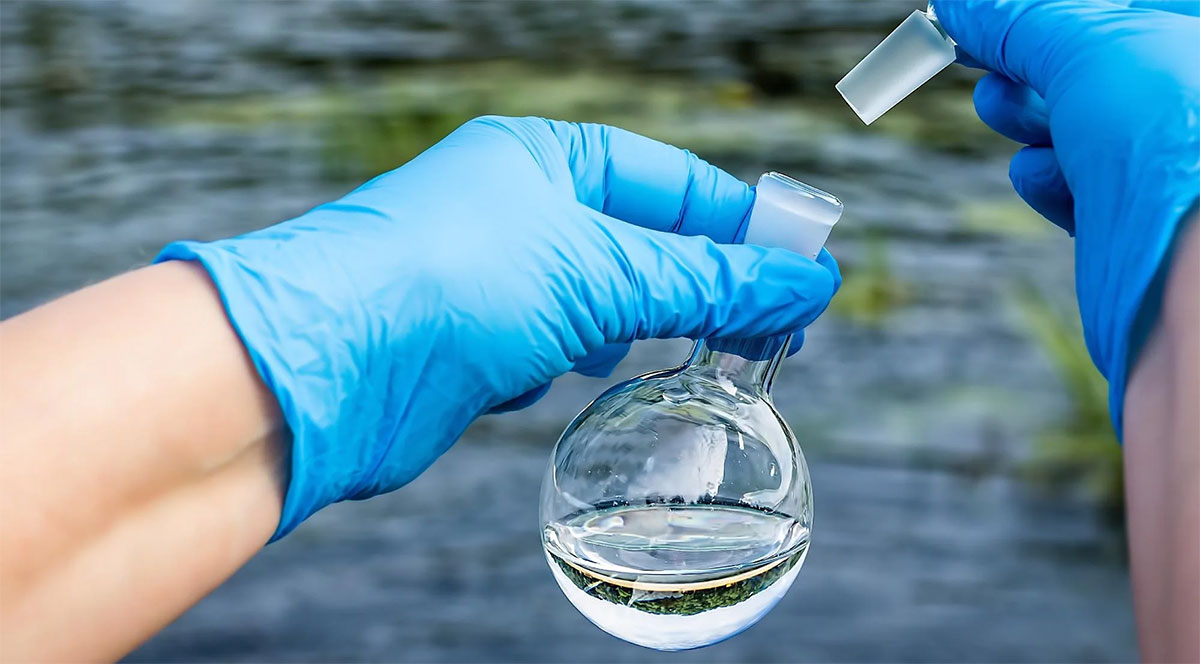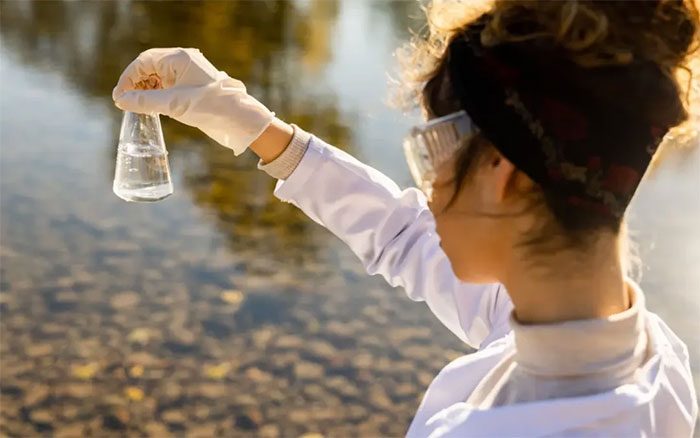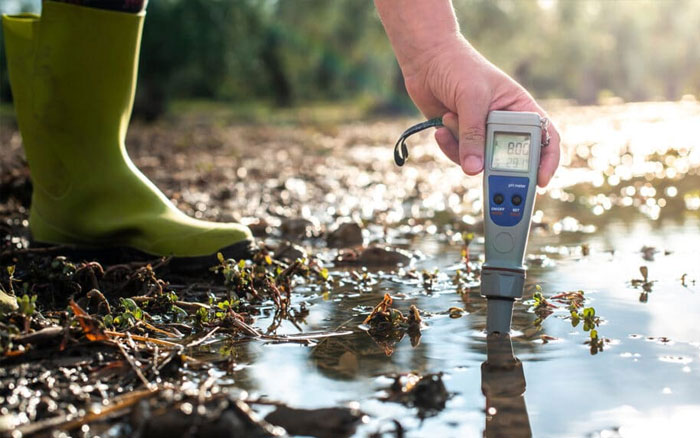
Improve water quality is essential for sustaining life on Earth. By implementing effective strategies to prevent pollution, treat wastewater, restore habitats, and raise awareness, we can ensure clean and safe water for communities, ecosystems, and future generations.
What is water pollution?
Water pollution refers to the contamination of water bodies such as rivers, lakes, oceans, groundwater, and aquifers, by harmful substances or pollutants. These pollutants can be introduced into water bodies through various human activities such as industrial discharge, agricultural runoff, improper waste disposal, sewage and wastewater discharge, oil spills, and littering.
Water pollution can have detrimental effects on aquatic ecosystems, as well as on human health and the environment. It can lead to the destruction of aquatic habitats, the decline of aquatic species, the contamination of drinking water sources, and the spread of waterborne diseases. Additionally, water pollution can impact industries such as fishing, agriculture, and tourism, leading to economic losses.
Efforts to mitigate water pollution include implementing regulations and policies to control pollutant discharge, improving wastewater treatment processes, promoting sustainable agricultural practices, raising public awareness about the importance of water conservation and pollution prevention, and investing in technologies for cleaner production methods.
Main factors that affect water quality
Several factors can affect water quality, including natural processes and human activities. Some of the main factors include:
- Nutrient Levels: Excessive nutrients such as nitrogen and phosphorus from sources like agricultural runoff, sewage discharge, and fertilizers can lead to eutrophication, causing algae blooms and oxygen depletion in water bodies.
- Chemical Pollution: Industrial discharges, improper disposal of chemicals, and runoff from urban areas can introduce various pollutants into water bodies, including heavy metals, pesticides, pharmaceuticals, and other harmful substances.
- Sedimentation: Soil erosion from deforestation, construction activities, and agricultural practices can lead to sedimentation in water bodies, which can degrade water quality by clouding the water and smothering aquatic habitats.
- Pathogens: Sewage and wastewater discharge, runoff from animal agriculture, and improper sanitation practices can introduce pathogens such as bacteria, viruses, and parasites into water bodies, posing risks to human health.
- Temperature: Changes in water temperature due to factors like deforestation, urbanization, and climate change can disrupt aquatic ecosystems and affect the distribution and survival of aquatic species.
- pH Levels: Acidification or alkalization of water bodies due to natural processes or pollution can affect the health of aquatic organisms and alter nutrient availability.
- Dissolved Oxygen: Pollution, nutrient enrichment, and changes in temperature can influence the dissolved oxygen levels in water bodies, affecting the survival of aquatic organisms such as fish and other aquatic fauna.
- Toxic Substances: Release of toxic chemicals such as heavy metals, pesticides, and industrial pollutants can have severe impacts on aquatic life and human health.
- Habitat Destruction: Alteration and destruction of natural habitats through activities such as dredging, dam construction, and urban development can degrade water quality and reduce biodiversity.
- Climate Change: Climate change can exacerbate existing water quality issues by altering precipitation patterns, increasing the frequency of extreme weather events, and causing changes in water temperature and pH levels.
How can water quality be assessed?
Water quality assessment involves evaluating various physical, chemical, and biological characteristics of water to determine its suitability for different uses and its overall health. Several methods and parameters are used to assess water quality:
- Physical Parameters:
- Temperature: Measured using a thermometer to assess thermal pollution and its effects on aquatic organisms.
- Turbidity: Indicates the clarity or cloudiness of water, often measured with a turbidity meter or Secchi disk to assess sedimentation levels.
- Color: Examined visually to detect the presence of substances such as dissolved organic matter or pollutants.
- Chemical Parameters:
- pH: Measures the acidity or alkalinity of water, crucial for assessing its suitability for aquatic life and various uses. pH meters or test kits are commonly used.
- Dissolved Oxygen (DO): Oxygen dissolved in water, essential for aquatic organisms. DO meters or chemical tests are used to measure levels.
- Nutrients: Nitrogen and phosphorus levels are assessed to determine nutrient enrichment and eutrophication risk.
- Heavy Metals: Metals such as lead, mercury, and cadmium are monitored due to their toxicity. Atomic absorption spectroscopy and other analytical methods are used for measurement.
- Organic Pollutants: Presence of organic compounds like pesticides, industrial chemicals, and pharmaceuticals is detected using chromatography and spectroscopy techniques.
- Salinity: The concentration of dissolved salts in water, measured with a conductivity meter or refractometer.
- Chemical Oxygen Demand (COD) and Biochemical Oxygen Demand (BOD): Indicators of organic pollution and the amount of oxygen required by microorganisms to decompose organic matter.
- Biological Parameters:
- Biological Diversity: Assessment of aquatic organisms such as algae, macroinvertebrates, and fish to gauge ecosystem health and biodiversity.
- Presence of Indicator Species: Species sensitive to pollution, like mayflies or stoneflies, are used as indicators of water quality.
- Microbial Contamination: Detection of fecal coliform bacteria, Escherichia coli, and other pathogens using culture-based methods or molecular techniques like PCR.
- Hydrological Parameters:
- Flow Rate: Measurement of water flow in rivers and streams, important for understanding pollutant transport and dilution.
- Groundwater Level: Monitoring groundwater levels and quality through wells and piezometers.
- Remote Sensing Techniques:
- Satellite imagery and remote sensing technologies can provide valuable information on water quality parameters such as turbidity, chlorophyll concentration, and water temperature over large spatial scales.
Why is it important to improve the quality of water?
Improving the quality of water is crucial for several reasons:
- Human Health: Access to clean and safe water is essential for drinking, cooking, and personal hygiene. Contaminated water can lead to waterborne diseases such as cholera, typhoid fever, dysentery, and hepatitis, causing illness and even death, particularly in vulnerable populations such as children and the elderly.
- Ecosystem Health: Aquatic ecosystems rely on clean water to support diverse habitats and biodiversity. Pollution and poor water quality can harm aquatic organisms, disrupt food chains, and lead to the decline or extinction of species. Healthy aquatic ecosystems provide important ecosystem services such as water purification, nutrient cycling, flood regulation, and recreational opportunities.
- Economic Impacts: Water quality directly affects various sectors of the economy, including agriculture, fisheries, tourism, and industry. Contaminated water can reduce crop yields, damage fish populations, degrade recreational areas, and increase healthcare costs associated with treating water-related illnesses. Improving water quality can enhance economic productivity and contribute to sustainable development.
- Drinking Water and Sanitation: Access to clean drinking water and adequate sanitation facilities is essential for public health and wellbeing. Poor water quality can compromise the safety and reliability of drinking water sources, leading to waterborne outbreaks and sanitation-related diseases. Improving water quality through treatment and pollution prevention measures can ensure access to safe drinking water and sanitation services for all.
- Environmental Justice: Ensuring equitable access to clean water and addressing environmental injustices related to water pollution are essential for promoting social equity and environmental justice. Marginalized communities, indigenous peoples, and low-income populations are often disproportionately affected by water pollution and lack access to clean water resources. Improving water quality requires addressing systemic inequalities and empowering communities to participate in decision-making processes.
- Sustainable Development: Clean water is a fundamental requirement for achieving sustainable development goals related to health, poverty reduction, food security, gender equality, and environmental protection. Investing in water quality improvement initiatives contributes to sustainable development by enhancing resilience, promoting social equity, and safeguarding natural resources for future generations.
How can we improve water quality?
Improving water quality involves implementing a combination of measures aimed at preventing pollution, reducing contamination, and restoring degraded ecosystems. Here are some key strategies to improve water quality:
- Pollution Prevention:
- Implement regulations and enforce environmental laws to limit pollution from industrial discharges, agricultural runoff, sewage, and other sources.
- Promote sustainable land management practices such as agroforestry, conservation tillage, and riparian buffers to reduce soil erosion and nutrient runoff.
- Encourage the use of environmentally friendly products, technologies, and practices in industrial processes, agriculture, and urban development.
- Invest in pollution control technologies and infrastructure for treating wastewater and reducing pollutant discharges into water bodies.
- Wastewater Treatment:
- Upgrade and expand wastewater treatment plants to ensure effective removal of pollutants such as nutrients, pathogens, and toxic substances.
- Implement advanced treatment processes such as tertiary treatment, disinfection, and nutrient removal to improve the quality of treated effluent.
- Promote decentralized wastewater treatment systems, constructed wetlands, and nature-based solutions for treating sewage and wastewater in rural and urban areas.
- Implement water reuse and recycling initiatives to minimize freshwater consumption and reduce the discharge of pollutants into water bodies.
- Stormwater Management:
- Implement green infrastructure practices such as permeable pavements, rain gardens, and vegetated swales to capture and treat stormwater runoff.
- Implement erosion control measures, detention basins, and sediment traps to minimize sedimentation and reduce the transport of pollutants in stormwater runoff.
- Adopt sustainable drainage systems (SuDS) and low-impact development (LID) techniques to manage stormwater runoff and protect water quality in urban and suburban areas.
- Habitat Restoration:
- Restore and protect wetlands, riparian zones, and aquatic habitats to enhance water quality, biodiversity, and ecosystem resilience.
- Implement river and stream restoration projects to improve hydrological connectivity, reduce sedimentation, and enhance habitat quality for aquatic organisms.
- Control invasive species and restore native vegetation to stabilize shorelines, prevent erosion, and improve water quality in freshwater and coastal ecosystems.
- Public Education and Awareness:
- Raise public awareness about the importance of water conservation, pollution prevention, and responsible water use practices.
- Provide education and outreach programs on water quality issues, watershed management, and the impacts of pollution on human health and the environment.
- Encourage citizen science initiatives, community-based monitoring, and volunteer efforts to monitor water quality, report pollution incidents, and engage in water stewardship activities.
- Integrated Water Management:
- Adopt integrated water resources management (IWRM) approaches that consider the interconnectedness of water systems, land use, and socioeconomic factors.
- Coordinate water quality management efforts across different sectors and stakeholders, including government agencies, NGOs, businesses, and local communities.
- Develop and implement watershed-based management plans that address multiple water quality stressors and prioritize actions to achieve water quality goals.
How geomembranes help improve water quality?
Geomembranes are synthetic liners or barriers used in various water containment and management applications to improve water quality by preventing contamination and seepage. Here’s how geomembranes help improve water quality:
- Containment of Contaminants: Geomembranes act as impermeable barriers, preventing the migration of contaminants from industrial sites, landfills, and waste storage facilities into surrounding soil and groundwater. By containing pollutants such as heavy metals, chemicals, and hazardous waste, geomembranes help prevent groundwater contamination and protect water quality.
- Lining for Water Storage and Treatment Facilities: Geomembranes are used to line reservoirs, ponds, lagoons, and tanks for storing and treating water. By creating a impermeable barrier between the stored water and surrounding soil or substrate, geomembranes help prevent leakage and seepage of contaminants into the water body, thus maintaining water quality and preventing pollution.
- Landfill Liners and Caps: Geomembranes are commonly used as liners and caps in landfill engineering to contain leachate and prevent groundwater contamination. By isolating waste materials from the surrounding environment, geomembranes help prevent the leaching of pollutants into groundwater and surface water, thereby protecting water quality and ecosystem health.
- Wastewater Treatment: Geomembranes are used in various components of wastewater treatment systems, including anaerobic digesters, lagoons, and containment ponds. By providing a barrier between wastewater and the surrounding environment, geomembranes help prevent the release of pathogens, nutrients, and pollutants into adjacent soil and water bodies, thereby improving water quality and public health.
- Stormwater Management: Geomembranes are used in stormwater management applications such as detention basins, retention ponds, and infiltration systems. By lining these structures, geomembranes help prevent the infiltration of pollutants from stormwater runoff into underlying soil and groundwater, thus reducing the risk of contamination and improving water quality.
- Aquaculture: Geomembranes are used in aquaculture operations to line ponds and tanks for fish and shrimp farming. By creating a barrier between the aquaculture water and surrounding soil, geomembranes help prevent the seepage of nutrients, chemicals, and pathogens into natural water bodies, thereby maintaining water quality and preventing pollution.
Conclusion
Improving water quality is imperative for safeguarding human health, preserving aquatic ecosystems, and ensuring sustainable development. Through a combination of pollution prevention measures, wastewater treatment technologies, habitat restoration efforts, and public education initiatives, we can mitigate contamination, protect water resources, and promote a healthier environment for current and future generations.






